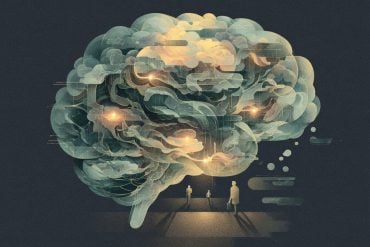Summary: Researchers report running can help mitigate the impact chronic stress has on the hippocampus.
Source: Brigham Young University.
Most people agree that getting a little exercise helps when dealing with stress. A new BYU study discovers exercise — particularly running — while under stress also helps protect your memory.
The study, newly published in the journal of Neurobiology of Learning and Memory, finds that running mitigates the negative impacts chronic stress has on the hippocampus, the part of the brain responsible for learning and memory.
“Exercise is a simple and cost-effective way to eliminate the negative impacts on memory of chronic stress,” said study lead author Jeff Edwards, associate professor of physiology and developmental biology at BYU.
Inside the hippocampus, memory formation and recall occur optimally when the synapses or connections between neurons are strengthened over time. That process of synaptic strengthening is called long-term potentiation (LTP). Chronic or prolonged stress weakens the synapses, which decreases LTP and ultimately impacts memory. Edwards’ study found that when exercise co-occurs with stress, LTP levels are not decreased, but remain normal.
To learn this, Edwards carried out experiments with mice. One group of mice used running wheels over a 4-week period (averaging 5 km ran per day) while another set of mice was left sedentary. Half of each group was then exposed to stress-inducing situations, such as walking on an elevated platform or swimming in cold water. One hour after stress induction researchers carried out electrophysiology experiments on the animals’ brains to measure the LTP.
Stressed mice who had exercised had significantly greater LTP than the stressed mice who did not run. Edwards and his colleagues also found that stressed mice who exercised performed just as well as non-stressed mice who exercised on a maze-running experiment testing their memory. Additionally, Edwards found exercising mice made significantly fewer memory errors in the maze than the sedentary mice.

The findings reveal exercise is a viable method to protect learning and memory mechanisms from the negative cognitive impacts of chronic stress on the brain.
“The ideal situation for improving learning and memory would be to experience no stress and to exercise,” Edwards said. “Of course, we can’t always control stress in our lives, but we can control how much we exercise. It’s empowering to know that we can combat the negative impacts of stress on our brains just by getting out and running.”
Funding: The research was funded by the National Institutes of Health.
Source: Todd Hollingshead – Brigham Young University
Publisher: Organized by NeuroscienceNews.com.
Image Source: NeuroscienceNews.com image is in the public domain.
Original Research: Abstract in Neurobiology of Learning and Memory.
doi:10.1016/j.nlm.2018.01.008
[cbtabs][cbtab title=”MLA”]Brigham Young University “Running Helps Brain Stave off Effects of Chronic Stress.” NeuroscienceNews. NeuroscienceNews, 15 February 2018.
<https://neurosciencenews.com/running-chronic-stress-8498/>.[/cbtab][cbtab title=”APA”]Brigham Young University (2018, February 15). Running Helps Brain Stave off Effects of Chronic Stress. NeuroscienceNews. Retrieved February 15, 2018 from https://neurosciencenews.com/running-chronic-stress-8498/[/cbtab][cbtab title=”Chicago”]Brigham Young University “Running Helps Brain Stave off Effects of Chronic Stress.” https://neurosciencenews.com/running-chronic-stress-8498/ (accessed February 15, 2018).[/cbtab][/cbtabs]
Abstract
Running exercise mitigates the negative consequences of chronic stress on dorsal hippocampal long-term potentiation in male mice
In the hippocampus, learning and memory are likely mediated by synaptic plasticity, known as long-term potentiation (LTP). While chronic intermittent stress is negatively correlated, and exercise positively correlated to LTP induction, we examined whether exercise could mitigate the negative consequences of stress on LTP when co-occurring with stress. Mice were divided into four groups: sedentary no stress, exercise no stress, exercise with stress, and sedentary with stress. Field electrophysiology performed on brain slices confirmed that stress alone significantly reduced dorsal CA1 hippocampal LTP and exercise alone increased LTP compared to controls. Exercise with stress mice exhibited LTP that was significantly greater than mice undergoing stress alone but were not different from sedentary no stress mice. An ELISA illustrated increased corticosterone in stressed mice compared to no stress mice. In addition, a radial arm maze was used to examine behavioral changes in memory during 6 weeks of stress and/or exercise. Exercised mice groups made fewer errors in week 2. RT-qPCR was used to examine the mRNA expression of components in the stress and exercise pathways in the four groups. Significant changes in the expression of the following targets were detected: BDNF, TrkB, glucocorticoid, mineralocorticoid, and dopamine 5 receptors. Collectively, exercise can mitigate some of the negative impact stress has on hippocampal function when both occur concurrently.






